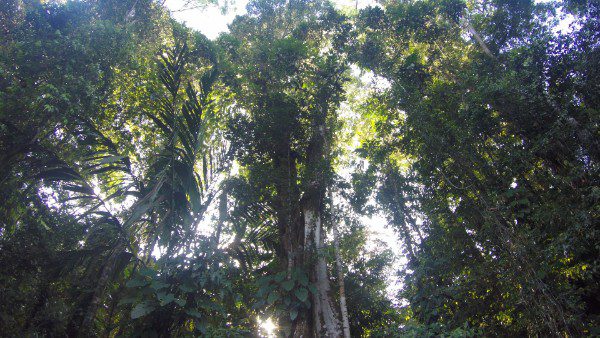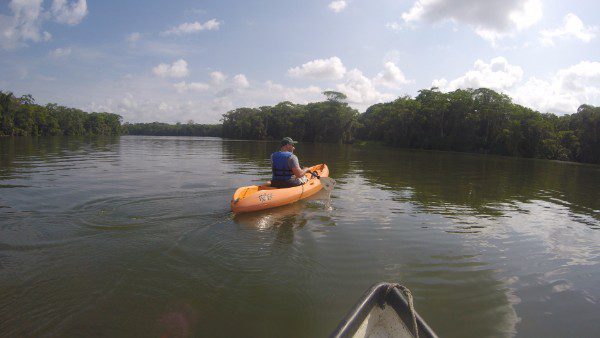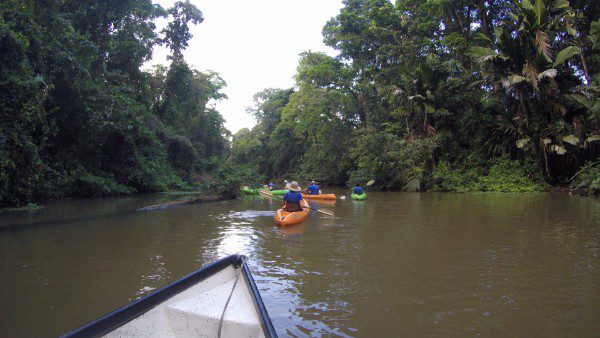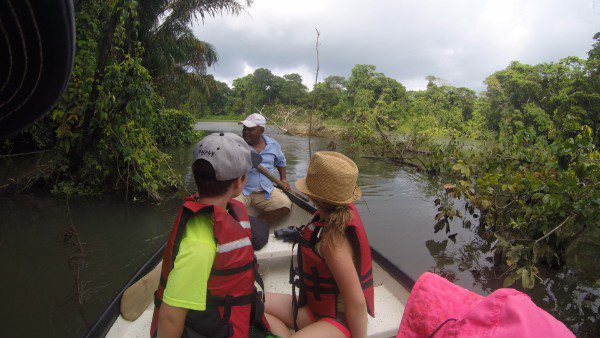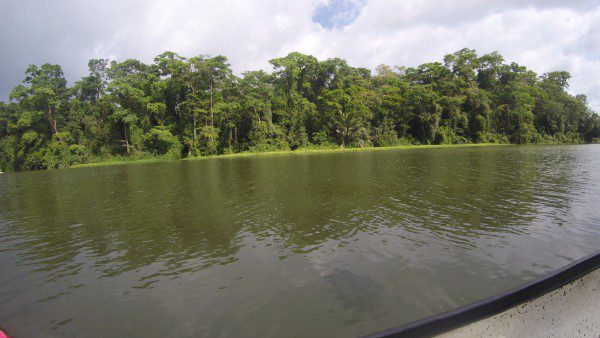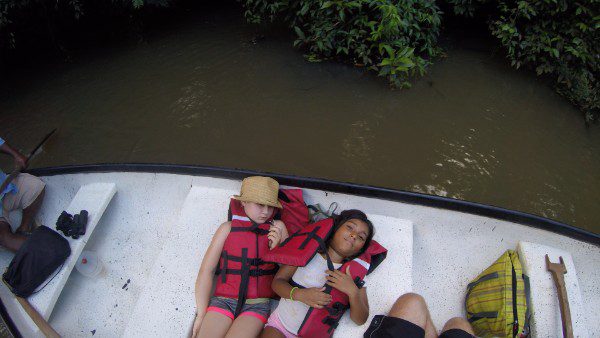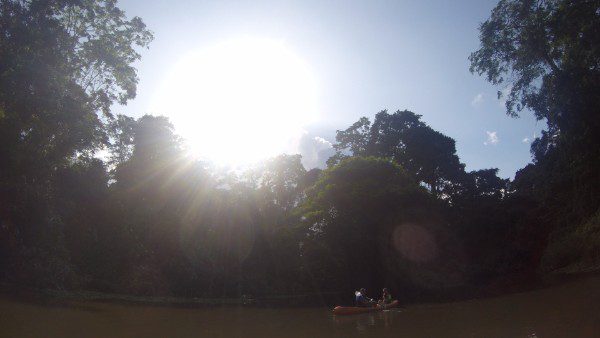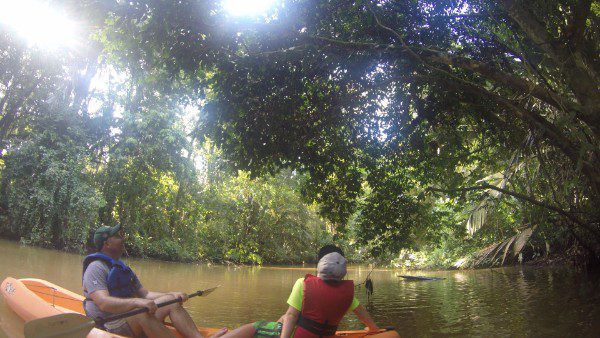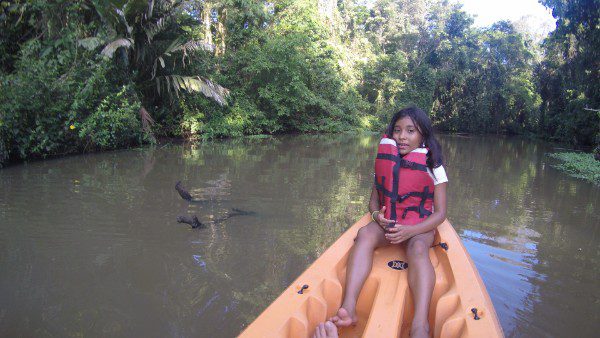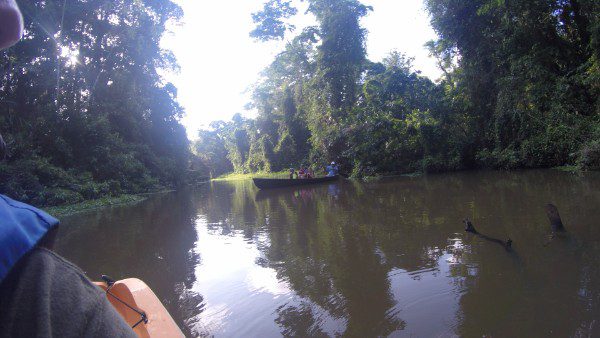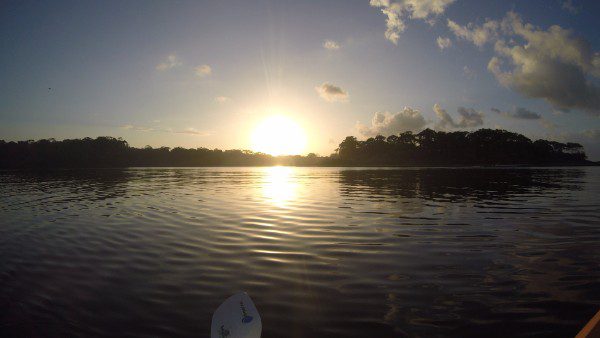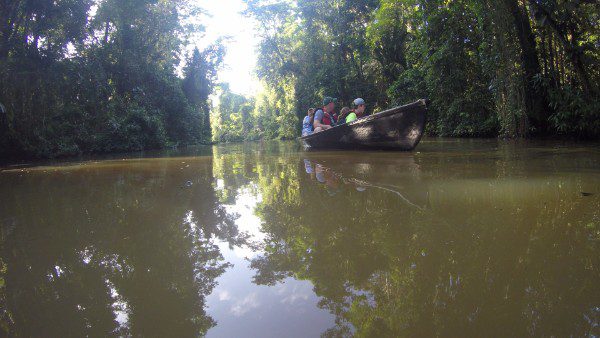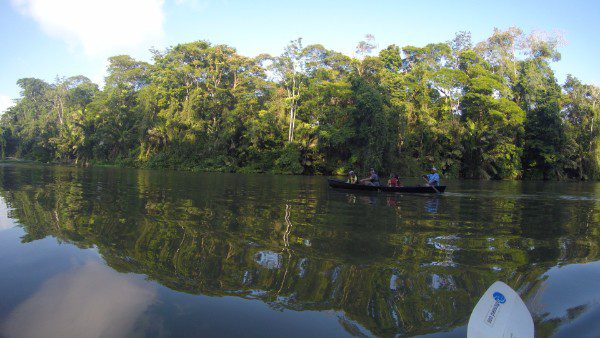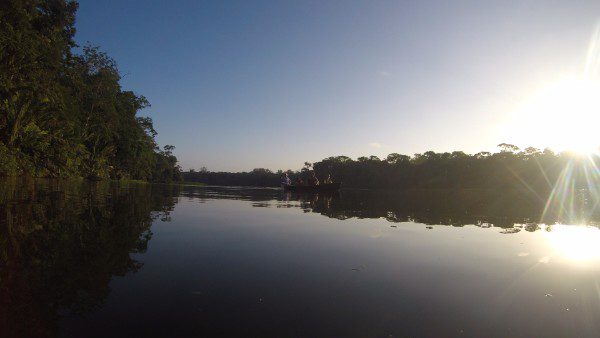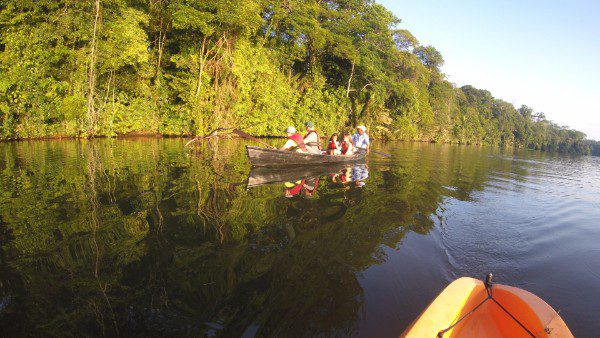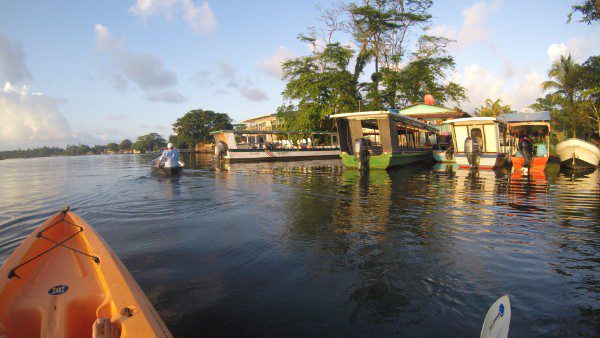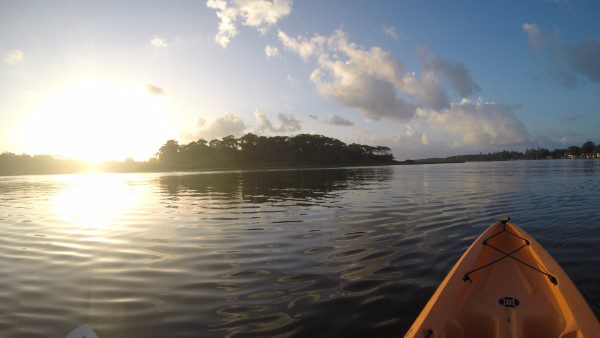Secret of Tortuguero
Cool Places – Forest for the Trees – Secret of Tortuguero
Going to Tortuguero is all about seeing and not seeing and then seeing again.
A Nature Air flight or a water taxi from La Pavona to this toothpick of an island on Costa Rica’s Caribbean coast is only about an hour (mas or menos) but it is a profound transformation.
If coming in by air, at first the island looks too narrow for an airstrip, but there it is, and soon you are on the ground. You head out on a tour of this Venice-like speck of a settlement in a flat-bottomed boat (same as the water taxi) to see the animals hiding in a watery maze of green.
Most guides are harpy eagle-eyed steersman headed to the caños where the black waters spill out of the rainforest. “Over there,” commands Juan, a typical guide, directing his floats to a wall of green, and then, melting out of the leaves and the waters below them, appears a procession of water birds, monkeys, lizards, caimans, sloths, butterflies – the list goes on and on. These spotters have an uncanny ability to see so many living creatures from across such wide canals.
What the happy, still sun-burning visitors see less of, and maybe not at all, even though it is right in front of them, is the rainforest itself. The tours are properly designed to show off individual figures of the handsome, unusual, rare, glorious, and even downright bizarre fauna of the Tortuguero wilds – but what of the ground itself? The ground in this case is the entire rainforest as a massive super-organism.
It takes a second glance to notice the neo-tropical rainforest itself – and way more than one breezy trip to do so. The rainforest is so complex and finely tuned with micro-biomes and largely invisible exchanges of energy, entwined ecologies, and interconnected life stories that it would make the plots of daytime telenovelas seem absurdly simple by comparison. It takes lifetimes to penetrate through these walls of green, but changing the focus to look at the background and not the foreground changes everything.
All at once, there is an epiphany. The details do not matter: Who but muckbooted scientists know the numbers on trophic cascades of ecosystem regulation. Yet DEET-covered tourists in flat-bottomed boats do have a way to see the forest for the trees.
The biologists measure the flows of energy in an ecosystem. The non-scientist can feel just as deeply the emotional experience of connection and participation, and the measureless flows of deep feelings in themselves. It is appropriate to have this oceanic feeling so close to the wave-timed pulse of the Caribbean sea that licks the nearby beaches, so beloved by the giant sea turtles.
Feelings of oneness and calm accompany the mystical participation that takes over as the visitor is invited to compare his insignificance and vulnerability against the calm grace of a wondrous world, so huge and green and unknown.
The poet Lord Byron wrote: “Are not the mountains, waves and skies a part of me and of my soul, as I of them?” This is what the tour guide proudly delivers at the end of the tour, though he couldn’t have told you where to look to see it, nor even that he secretly showed it to you. But this seeing, feeling, and being part of the whole rainforest is a treasured, immeasurable experience. It can change a life.

